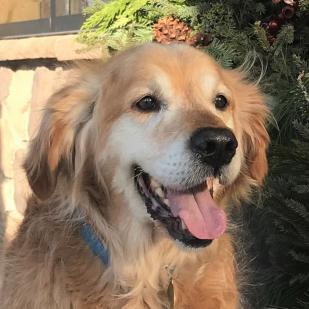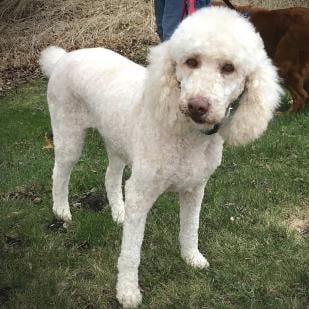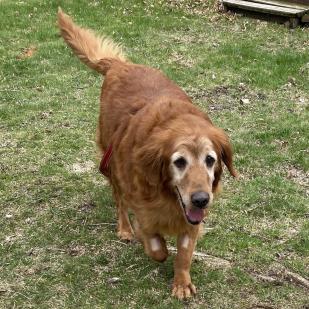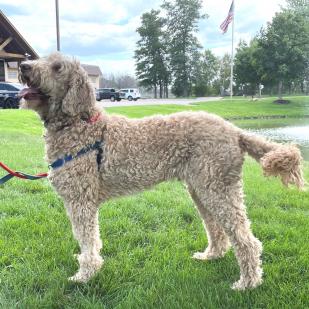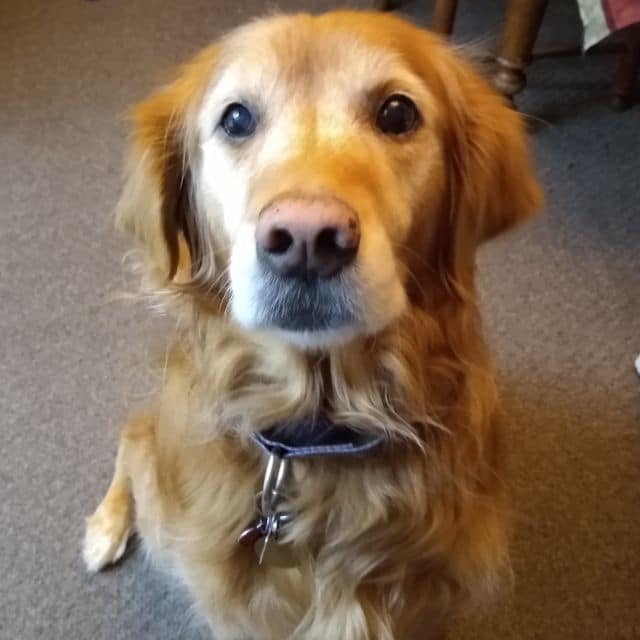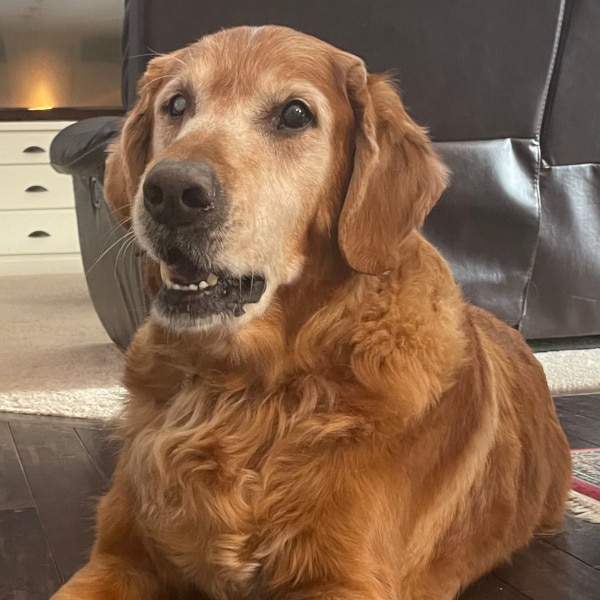Update your browser for more security, speed and the best experience on this site.
What It’s Like for Your Dog to Have Heartworm
Heartworm disease is caused by worms, which live in your dog’s heart. It is extremely serious, and deadly if left untreated. Many people think that heartworms are rare in the Midwest and don’t give their dog the needed monthly preventative pill.
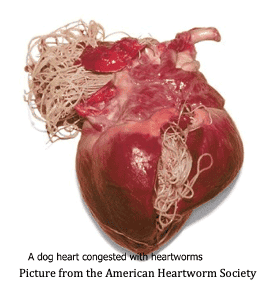
RAGOM regularly receives dogs that are suffering from heartworms. The treatment is long and grueling.
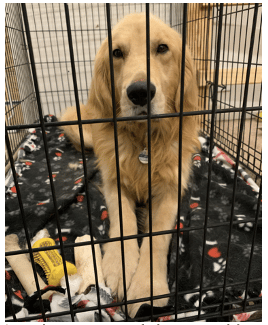
Leo underwent treatment for heartworm while in our care, which meant spending most of his time in a kennel.
About a year ago, we discovered Leo had heartworm when we welcomed him into our care. Leo endured treatment for four consecutive months to overcome his heartworm disease. The treatments, which involve medical injections from very long needles, are painful and exhausting.
Leo had to be in a crate or leashed and attached to his foster mom at all times. Dogs with heartworm are not allowed to run and play, or even go for walks. They must be kept very still because physical exertion increases the rate at which the heartworms can damage the heart and lungs.
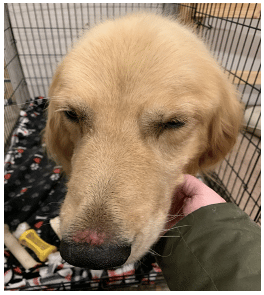
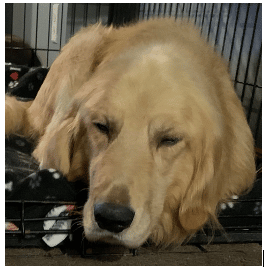
The cost for heartworm prevention is just roughly $8 per month but the cost for treatment of an infected dog is about $1,200.
Because of the seriousness of heartworms, RAGOM requires that dogs take heartworm preventatives and have an annual heartworm test. RAGOM requires adopted dogs to be on heartworm prevention as prescribed by their veterinarian. Heartworm tests are a blood draw and will not interfere with any type of medical treatment a dog is getting.
Common myths we hear on why someone’s dog is not getting preventatives:
- My dogs are small dogs so they don’t go outside for very long and they don’t go to dog parks. (Heartworm is spread from mosquitos, not from dog to dog transmission.)
- My dog is older and doesn’t need the test or preventatives. Even if your dog is getting older, they are still at risk for heartworm disease.
- People want to go the holistic route. (There are no proven holistic methods on preventing heartworm.)
The best and only way to protect your dog against heartworm disease is with a heartworm preventative and annual heartworm testing. Do the kind thing for your dog; make sure they receive preventative heartworm care!
Volunteering for RAGOM
When you volunteer for an organization whose mission is to rescue, foster, and find forever homes for Golden Retrievers and Golden mixes in need, you’re bound to embark on an emotional journey or two. From serving as the first point of contact for a family surrendering their Golden, to fostering dogs with seemingly insurmountable trauma, RAGOM volunteers are no strangers to the joy and sorrow that come with helping Goldens find their forever home. Let’s take a closer look at the emotional journeys of some of our RAGOM volunteers.

Mary, hotline volunteer
Mary, a RAGOM volunteer since 2012, does transport, home visits, foster care (22 so far!), mentoring and hotline. Of her many roles, she says foster care and hotline are her favorites.
Hotline is the first point of contact for those looking to surrender their dogs. The hotline volunteer talks to the surrendering owner to get as many details as possible about the dog and reason for surrender. The hotline volunteer then passes that information to the intake team to find a foster and arrange for the dog’s surrender.
Mary began volunteering in hotline after her dog passed away and the emotional toll it took was immediate.
“On my second or third day, I called Kathy and said, ‘I can’t do this,’” said Mary. “Kathy said, ‘Yes you can.’ And I’ve been doing it ever since.”
Mary says that hotline volunteers do a lot of listening. Surrendering owners who call in are usually very distressed—sometimes angry but mostly just really, really sad and in need of consoling. Mary leaves the judgement at the door.
“Many times, the surrendering owner doesn’t want to have to give up the dog, but finances, a medical condition or losing a home leave the owner no choice,” said Mary.
Occasionally hotline volunteers get calls from people whose dog is clearly living in a bad situation. In those cases, RAGOM works feverishly to get the dog out of its current environment immediately, even if it means boarding it while they look for a foster.
“You hear a lot of sad stories,” said Mary. “Some nights you don’t sleep very well. You have to be the advocate and the mouthpiece for the dog until the foster takes over.”
Hotline volunteers document their conversations with surrendering owners, but Mary says sometimes the story she captures on the intake form is only a small part of what she hears.
When asked if hotline took an emotional toll on her, she said, “In the beginning, you cry a lot. As time passes, it’s all about the dog. You need to put the emotion on a different plate, and the plate in front of me is ‘I have to get the dog into RAGOM’s care.’”
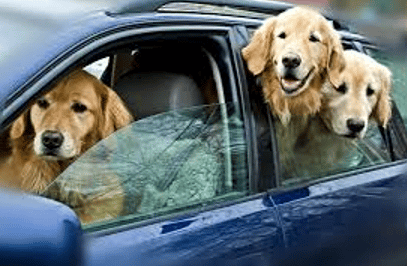
Laurie, lead transport coordinator
After hotline captures the information about the dog being surrendered, the intake team sends out a daily plea requesting foster volunteers. The dog’s disposition, needs and previous living environment are all taken into consideration when determining a suitable foster home. After intake finds the right foster home, they pass all the information—about the dog and the surrendering and foster homes—to a transport coordinator like Laurie.
Laurie has volunteered for RAGOM since 2009. She began as a foster and transport volunteer and is now a temporary foster and the lead transport coordinator. Her job is to arrange for the dog to get from its surrendering home to its foster home.
Her most memorable volunteer experience was about two years ago, when RAGOM received a call about 13 Oklahoma dogs needing a home. Their surrendering owner, who loved them very much and gave them all a good life, had to go into a nursing home.
The rescue organization in Oklahoma drove all 13 dogs to Minnesota in a van. Laurie and a group of RAGOM volunteers met them in a Walmart parking lot, but because of bad weather, seven of the planned foster volunteers couldn’t make it to pick up their dogs. So Laurie ended up taking all seven dogs home with her that evening.
“It was crazy but wonderful,” said Laurie. “It was freezing cold, but the dogs were amazing and handled the transport so well.”
The next day, the dogs went to each of their foster homes. But as soon as the dogs got to their foster homes, they shut down because they were missing their pack. So, over the next month, Laurie took four of the dogs back until they became settled enough that they could successfully separate from each other.
“I cried for every goodbye,” said Laurie.
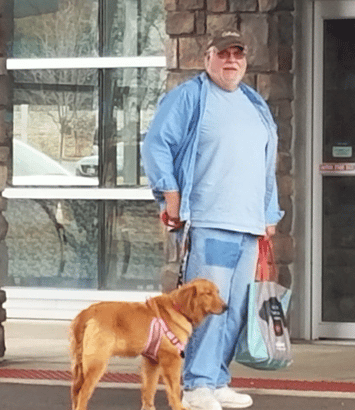
After Laurie (or one of the other four transport coordinators) receives details about the surrendering dog, she reaches out to transport volunteers—like husband-and-wife team Lloyd and Jeri—to coordinate the various legs of the drive from the surrendering home to the foster home.
RAGOM volunteers since 2011, Lloyd and Jeri have volunteered in hotline, transport, home visits, screening and foster care. They enjoy transport the most because they get to meet a lot of different dogs and spend time together on the road.
Lloyd and Jeri say that when they first pick up a dog to transport, the dog is stressed. But they’ve found that Goldens have an exceptional ability to maintain joy in the face of trauma (Lloyd and Jeri also volunteer to do transport for other rescue organizations). Case in point: The dogs rescued from Turkey spent 24 hours in a crate and still came out happy with their tails wagging.
The first leg of the trip can be the most challenging, especially when the owners are devastated about surrendering their dogs because of unavoidable hardships. Lloyd and Jeri say it’s certainly an emotional experience but ultimately one that is rewarding.
“When it’s hard, the good thing is you know the dog is going to a good home in the end,” said Lloyd. “They’ll be medically taken care of, then have a good foster home and a good forever home, where they’ll be loved and cared for.”
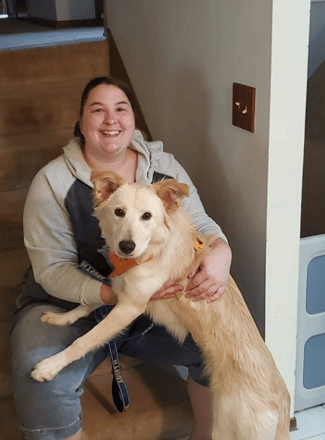
Karen, foster volunteer
Karen, a RAGOM volunteer since 2005, is one such foster volunteer who receives the dogs Lloyd and Jeri transport. In addition to fostering, Karen is also a RAGOM volunteer vet coordinator and member of the behavioral services team.
Karen’s first RAGOM foster pup in 2005 was a Hurricane Katrina dog. Since then, she estimates she’s fostered anywhere from 30–50 dogs.
When asked how she would describe the emotional aspect of fostering, Karen said, “When I foster a dog, I know the first few weeks can be pretty tough. But when I see the dog start making progress, it is totally worth it.”
Karen also serves as support for struggling new fosters. “I tell them that when fostering a dog, I almost always feel overwhelmed and teary at some point during the first week,” said Karen. “They are relieved to hear that it’s hard for all of us—they assume it’s just them, or that particular dog.”
All dogs who come into RAGOM’s foster care have just had their entire life turned upside down. It’s no surprise, then, that the most rewarding aspect of fostering is when, after the first few weeks, the dog starts to flourish. By the time the dog is adopted out to its forever family, Karen says foster volunteers almost certainly cry again—but this time tears of joy because they love the foster dog so much and know they have given that dog a new chance at a happy life.
“This is why we do it again and again,” said Karen. “It’s so gratifying!”
If you’d like to join our mighty village of more than 300 RAGOM volunteers, please check out our volunteer openings.
Would you consider adopting a senior dog?
Why dogs rescued from commercial breeding need to have another confident dog in the home
As you’re scrolling through RAGOM looking for your next fur baby, you might notice the “another dog required” stipulation on some dogs’ bio page. Sometimes that’s because the dog simply prefers a canine companion and can be more successful in a home with a buddy or two. Other times, it’s because the dog has come from a commercial breeding facility—businesses focused on the production and sale of puppies.
Dogs that come from breeding facilities have experienced life very differently from other dogs. Most have endured psychological stress throughout their lives and have never been socialized or exposed to the normal things a family dog experiences every day.
So initially, navigating life in your home is filled with many scary experiences. These dogs are fearful of almost everything—doorways, stairs, televisions, loud noises, hardwood floors and even the sound of the washing machine. All dogs from these facilities exhibit some level of fear—the severity depends on their personalities and past experiences.
While some dogs respond quickly to a nurturing home environment, others require months or years of rehabilitation. Dayle, who has become known as somewhat of a breeding dog whisperer, has fostered more than 100 RAGOM dogs since 2007. “Many dogs have been returned to RAGOM in the past because they were adopted out to people who didn’t have another dog, and the dog never left its safe spot, never came out of its shell,” says Dayle.
Research finds—and RAGOM’s experience supports—that the single most important factor in rehabilitating breeding dogs is a role model: a confident medium-to large-sized dog who is social with humans and other dogs to help the former breeding dog navigate and become accustomed to their new world.
Here’s why:
- It teaches them how to be a dog. The role-model dog can teach the breeding dog things she can’t learn from humans, such as socialization, not to fear loud or unfamiliar noises, how to play, and most importantly, that humans can be trusted to love and care for them. Over time, the breeding dog might start to realize that the thing she was so scared of is actually nothing to worry about.
- It reduces the intensity of emotional reactions. Role-model dogs can serve as a social buffer for the breeding dog, reducing the intensity of the emotional reaction to something frightening or stressful. Compatibility between the dogs is important—friendship even better!
- It takes the pressure off. When the breeding dog is the only dog in the house, all of the human-dog interaction is focused in one place, which can be too intense for a shy or fearful dog.
- It buys patience and time. When adopters have only one dog in their house and that dog fears them, won’t make eye contact with them, and won’t let them touch her, it’s difficult and frustrating for even the strongest, most loving and most patient of humans. And because we now know that breeding dogs can show these reactions and behaviors for months and even years before improving, the patience this requires when the breeding dog is a person’s only dog would need to be almost superhuman. Having a “normal” dog in the house serves as the outlet for all the love and positive feedback the adopter needs, making it considerably easier for her to give the breeding dog all the time he needs to emotionally recover from the mill experience.
Meet Josie and Maya
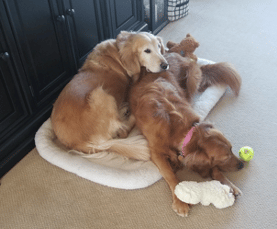
Josie and Maya are real-life success stories of the impact a role-model dog can have on a breeding dog rescue. Adopters Al and Maryann, who had previously adopted Bear from RAGOM, knew they wanted to add to their pack, so they returned to RAGOM to adopt another Golden.
Immediately upon seeing Josie’s face online, they knew she was the one. They met her at foster mom Dayle’s home and spent quite a bit of time getting to know Josie. In April 2018, they brought her home, having no real understanding of what adopting a breeding dog entailed.
As breeding dogs often do, Josie found her safe spot in Al and Maryann’s home. Four months after adopting Josie, Bear unexpectedly passed away. Al and Maryann were devastated. But in those few short months, Bear had taught Josie so much. She had blossomed into a strong, confident dog. Could she possibly be a role-model dog for another breeding dog? Everyone was so impressed with how Josie came around in such a short amount of time, and how she no longer acted like she came from a commercial breeder. The answer was yes! Josie was ready to share what she learned about how to “dog” with a new breeding dog friend.
So, in September 2019, Al and Maryann brought home Maya, who was also fostered by Dayle. It didn’t take long to realize Maya was more fearful and nervous than Josie ever was. Maya hid in the utility room when people came over, refused a leash and insisted on eating off the side of her bed (Maya’s safe spot). Al and Maryann knew they—and Josie—had their work cut out for them.
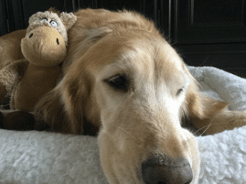
Baby steps
Fast forward 15 months. With time and patience, Maya has blossomed. Now when people come over, Maya joins the party. Her tail wags freely rather than staying tucked under her bottom. She no longer needs to eat off the edge of her bed, and she now stands at the kitchen sink in eager anticipation of mealtime. And after starting slowly with a lariat leash, Maya is now comfortable on a leash.
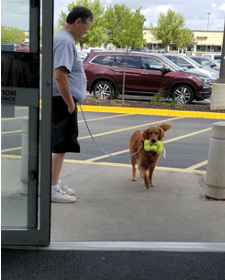
“It takes baby steps,” says Dayle. “It’s not a straight line—the little successes are huge.”
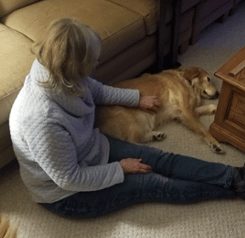
Today, Josie, 7, and Maya, 5, are the best of friends. Josie watches out for Maya in the backyard, and she taught her how to be comfortable in a car. And Maya takes care of Josie, too. When Josie gets scared during thunderstorms, Maya sits with Josie to reassure her.

“We’ve seen firsthand the impact a resident dog can have on the breeder dog,” says Maryann. “Breeder dogs are so insecure; everything is strange to them.”
When asked if they would adopt a breeding dog again, they both said “absolutely,” with no hesitation.
“We’ve gotten more love back than we’ve given,” says Al.
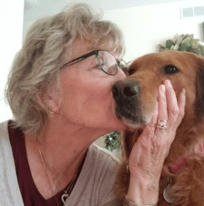
Goodbye, sweet Gabe.
Last year, the RAGOM village rallied to help a senior dog who was nearly blind and nearly deaf. He’d been found as a stray a few months prior, and first taken in by an Iowa shelter. Knowing surely someone must be worried sick about him, they went to great lengths to track down his owner. But his owner did not want him back.
We couldn’t understand why. But we knew this sweet gentleman deserved better. We were happy to take him into our care.
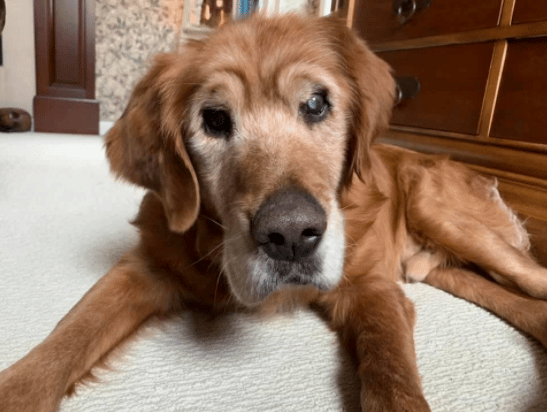
He was given the name Gabriel because he was in need of a few angels. And that’s exactly what he got when our supporters learned about him.
In addition to his vision and hearing issues, Gabe arrived with a heart murmur, a tumor on his testicle, and double ear infections. He was skin and bones.
But he was full of love for those around him, and we could see he had a strong will to live. We asked for your help. And you answered the call.
A chain of volunteers drove him all the way from Iowa to Spicer, MN, where a loving foster home was waiting for him.
A veterinarian heard Gabe’s story. Her schedule was booked solid, but she came in early the next morning to help him. Supporters donated funds to pay for all of Gabe’s medical needs.
Gabe’s foster family began treatment for his double ear infections, and set out to help him gain ten pounds. Gabe visited an eye specialist, and surgery was scheduled.
The veterinarian was hopeful he’d be able to remove the significant cataracts Gabe had on his eyes, restoring his vision. But under anesthesia, they discovered they would not be able to improve his vision. The doctor was, however, able to remove the painful growths on Gabe’s eyes that caused him to constantly rub his face.
Despite his limitations, Gabe was happy, and we wanted to make sure the rest of his days were wonderful. They sure were.
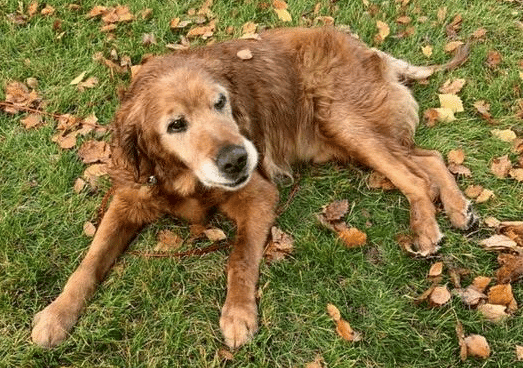
Gabe was adopted by a kindly person. His new mom made sure every day was filled with love and joy. Gabe loved going for walks, being in nature, rolling in the leaves and snow, and sharing a banana each morning.
“The gift of love is a blessing. The honor of being trusted by an old, blind, and nearly deaf soul to provide for all his needs was the most humbling experience of my life,” his adopter said.
This sweet dog, who had been loved for no one for most of his life, was now cherished.
Recently, cancer and neuropathy got the best of Gabe, and he grew weary. He slipped away peacefully, surrounded by love.
“I am heartbroken,” his mom said, “and pray he is living unencumbered, running free in spirit. I feel him with me, and while it is comforting it is gut-wrenching at the same time to know our physical journeys together have ended.”
Rest in peace, sweet Gabe. You were loved by all of us.
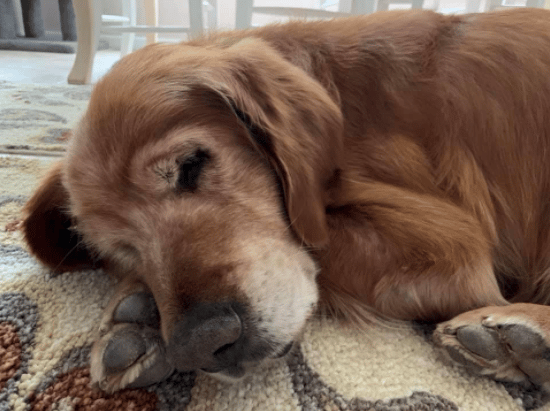
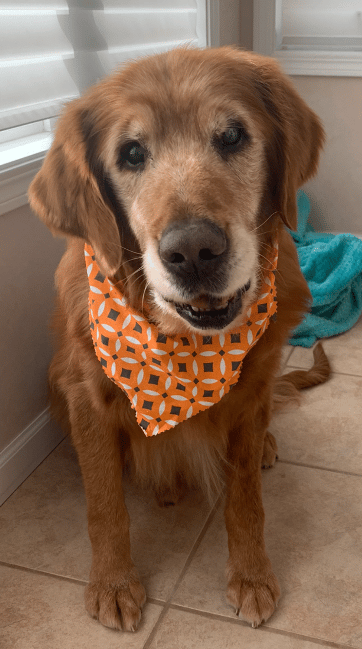
Remember Gabe, our happy senior rescue from Iowa? Nearly blind and deaf, Gabe was found as a stray a year ago. A chain of wonderful RAGOM volunteers drove him all the way from Iowa to Spicer, MN, where a loving foster home was waiting for him.
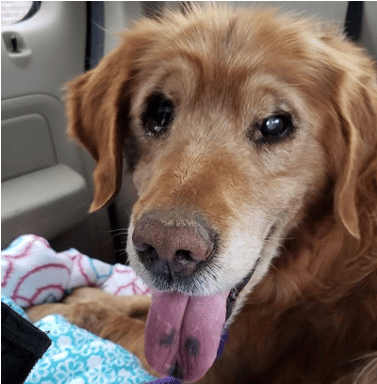
Having been on the streets for quite some time, Gabe had some health issues that required treatment, including ear infections, growths on his eyes, kidney disease, a urinary tract infection, a tumor on his testicle, and a heart murmur. Thanks to your generous donations, Gabe was able to get all the medical care he needed. His foster family helped him gain some much-needed weight and gave him all the love a sweet senior deserves. Gabe thrived in their care.
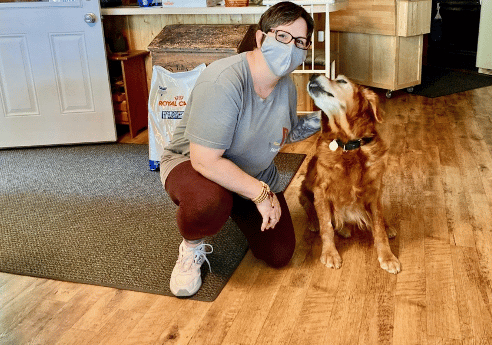
Earlier this month, Gabe found his forever family! Gabe’s new family includes a mom, two teenage boys, and a cat. Gabe quickly learned his way around his new home, and he is thriving in their care. We caught up with Gabe’s mom Shelley to find out how he’s doing, and here’s what she said.
Gabe is a wonderful addition to our family. He enjoys snuggles, short walks several times a day, laying outside in the sunshine during the late summer and early fall days of this past year, and he is always willing to keep me company when I am cooking or busy cleaning in the kitchen! He’s not super interested in wading in the lake or swimming, but he is always up for some people time regardless of where we go!
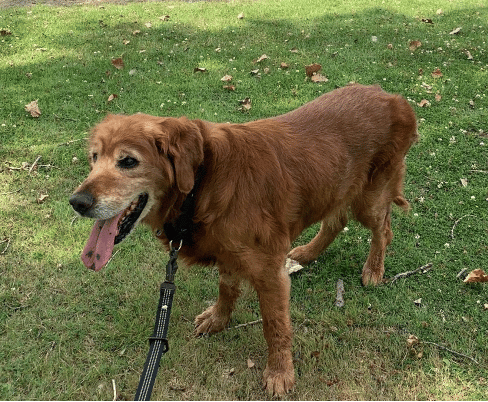
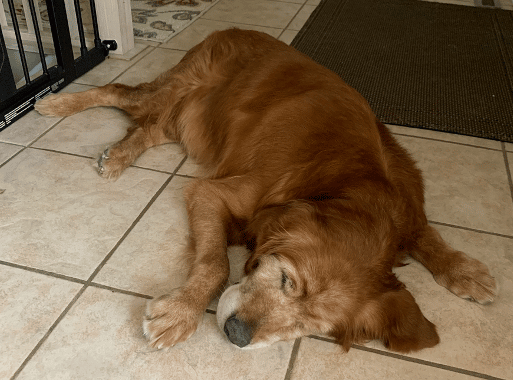
Gabe can get a little anxious when he awakens and cannot find his people (likely due to his blindness and hearing deficiency), so I perform my telecommute job duties from the kitchen table to alleviate his distress. My work shadow, Gabe lays by my chair while mom works, and he is always ready for a snuggle or quick pet. He wants to be near me wherever I am working, and especially enjoys when the mama lays on the floor with him while watching movies. Gabe loves his snuggles!
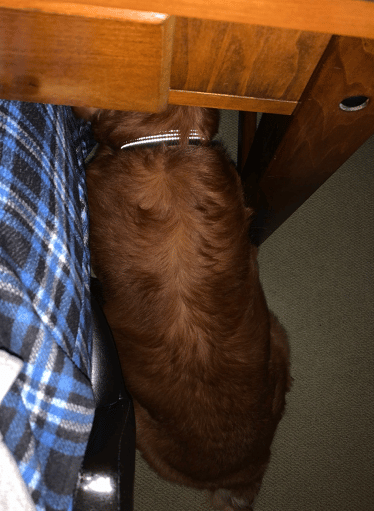
Gabe has a smile that goes on for days and the most adorable head tilt when he is “looking” around when outside. Although he cannot see, Gabe is always up for a good “run” while laying down. Every time we go outside, Gabe lays down and “runs” with his front legs. He does this because his back legs are not mobile enough to allow him to move them as freely. Gabe’s horizontal running makes the best snow angels!!
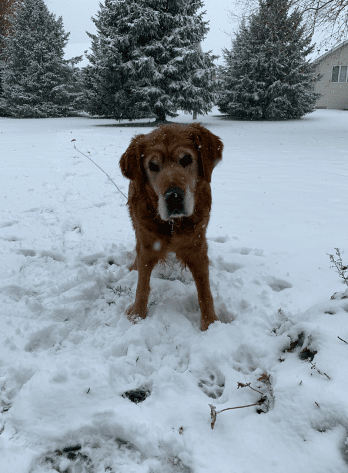
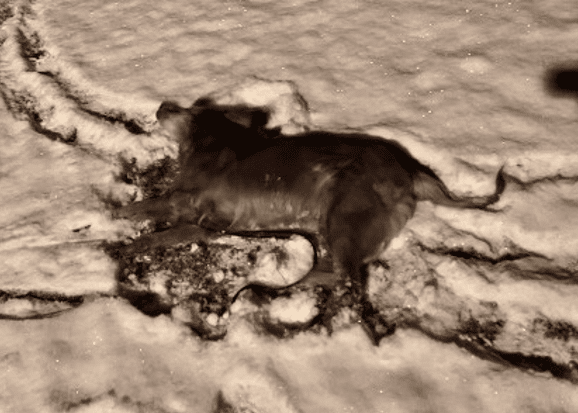
His kidney disease is being closely monitored by our veterinarian, and Gabe eats a special diet to assist with decreasing the stress on his kidneys in hopes of slowing its progression. Gabe enjoys sharing a banana with mom after we return from our morning walk and he is always interested in whatever is being cooked, while secretly hoping some goody will find its way to his food dish.
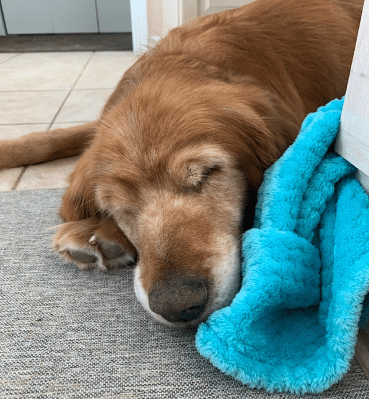
Gabe has his good and not so good days with his ability to ambulate and sometimes appears to not know where he is until he smells who is petting him. For right now, the pretty good outweighs the not so good. We are prepared to love him each and every day for the rest of his time with us. He holds a very special place in our hearts, and we would be absolutely lost without him!
RAGOM does all that we can for every dog that comes to us because we believe every dog believes a second chance. Will you consider adopting a senior or special needs dog?
Life is sweeter when you forgive and forget
As a new RAGOM volunteer, my first assignment was to write about 2-year-old Korey, who is currently available for adoption. If you’ve followed RAGOM in 2020, you may know about this handsome guy. He came to RAGOM in January having just been rescued from China, where the abuse he suffered left him paralyzed from the waist down. Back when Covid-19 first hit China, people falsely believed dogs spread the virus, so many were surrendered, abandoned or beaten.
I know, I know—the mere hint of animal abuse makes you want to stop reading now and move on to something—anything!—less heartbreaking. Believe me, I get it. But thankfully that’s the end of the sad stuff because, as I discovered, Korey’s life today is full of joy, love and hope!
Korey’s Ideal Home
- Parents who are patient and understanding of Korey’s incontinence
- No rugs or carpet on at least one level
- Ability to lift about 50 pounds if needed
- Kids are fine, other pets probably are too but Korey would have to meet them first
- A backyard fence is not required
- No crate time
- A couple walks a day
- Parents can work outside the home as Korey does just fine alone during the day
My playdate with Korey
I felt the best way to write about Korey was to meet him. So, joined by my husband and three of my kids, I met Korey and Rutager (his foster dad) in a park on Halloween Day. We saw them both from afar—the doggie wheelchair Korey uses to get around sets him apart just a bit. When he saw us and could tell Rutager was heading our direction, Korey ran to greet us with dog hugs and kisses. Good around strangers? Check! Good with kids? Check!
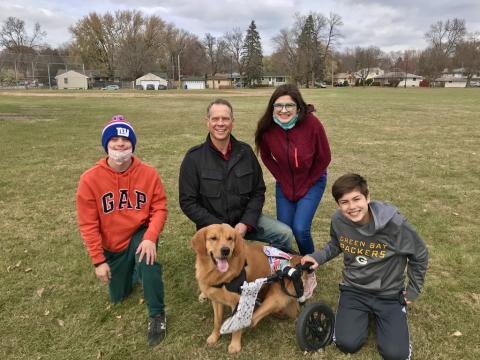
I was in awe watching Korey navigate the world from the confines of his wheelchair. He doesn’t let it slow him down at all. In fact, he really doesn’t let anything slow him down. When Rutager took him out of his wheelchair, Korey was able to use his hind legs to go anywhere he wanted, at just about any speed he wanted. They are atrophied and stiff so they don’t bend and operate like legs, but he can use them to prop his back end up and then pull himself forward with his front legs. It’s quite impressive and a powerful testament to his physical and mental strength and fortitude.
Korey is loving and playful, gentle and curious. As Rutager said, Korey would have been adopted immediately if it weren’t for his incontinence (see below). He is everything that is good and fun and wonderful about dogs, all wrapped into one beautiful, well-behaved, energetic and fun-loving pup. He just needs to find his forever home to make this Cinderella story complete.
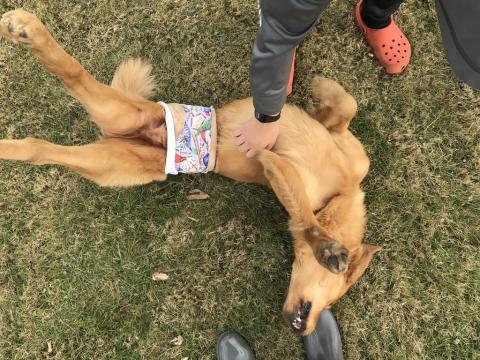
Korey is very adoptable!
I repeat: Korey is adoptable. He will make an excellent companion with the right person or family. Maybe that’s you?! Here are some things about Korey that might help you determine if he’s right for you:
- Korey loves strangers, kids and puppies. With all the trauma Korey has experienced, it’s truly remarkable he isn’t fearful and aggressive. But he’s not. Korey hasn’t met a human, kid or puppy he doesn’t love. Bigger dogs are hit or miss, but for the most part, Korey is up for any and all new friends. Rutager is working on testing Korey around cats—follow Korey’s RAGOM blog to get progress updates on how that’s going.
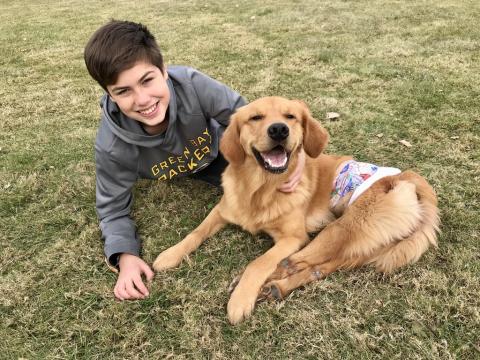
- Korey is incontinent and that likely won’t change in his lifetime, so patience and understanding are essential. With paralysis comes incontinence, which means he can’t control his bladder or bowel functions at all. For urine, his Rutager has found that expressing Korey’s bladder is the easiest on everyone. I watched him do this and it’s a surprisingly simple process. He just gets up under Korey’s haunches, wraps his arms where Korey’s bladder would be, and squeezes gently until urine comes out. It’s not messy at all and Korey doesn’t mind it. Rutager said he expresses Korey’s bladder every two hours when he’s home, but since Korey does well when he’s home alone during the workday, he can certainly go for longer stretches than two hours. Korey also wears a belly band that serves as a diaper, which catches any leaks between bladder expressions.As for the poop, well, it comes out whenever it comes out. There’s no sugar-coating it, it’s a bummer. The good news is that it comes out in fairly clean and manageable pieces, so it’s just a matter of picking up and wiping the spot with a sanitizing wipe. Even so, it’s probably best to have no carpet or rugs on at least one level of the home.
It’s worth mentioning that Rutager said he’s only come home to a real mess twice in the nine months he’s fostered Korey. All things considered, that’s not bad at all, and the poop situation actually sounded much less intimidating than I expected.
I wish this went without saying, but it doesn’t, so I’ll say it anyway: Korey should never, ever be punished for his inability to control bladder and bowels. It’s not a behavior issue or something to be corrected. He can’t help it because he has no feeling down there, plain and simple.
- Korey weighs about 50 pounds so at least some physical strength is required. Korey is close to full grown at 50 pounds so be sure you’re comfortable carrying and lifting that amount of weight. Whether it’s helping him get in the car or hoisting him into his wheelchair, at least some physical strength is required.
- Korey spent most of his life trapped in a crate before being rescued, so putting him in a crate for any amount of time is not in his best interest. It’s tempting to think about containing any accidents he might have by putting him in a crate when you’re away. But considering how rough Korey had it before RAGOM—not to mention the anxiety he exhibited when Rutager tried him in a crate in the beginning—crating him is not a good idea.
- Korey sleeps through the night. And he doesn’t even sleep in the same room as Rutager. He’s happy as a clam to go to bed when it’s time (given he gets his bedtime cookie, of course). His diaper is usually just a bit wet when he wakes up but he also has a full bladder when Rutager expresses it in the morning, so he’s able to hold it fairly well at night.
- Vet bills should be about the same as any other dog. Yes, he’s in a doggie wheelchair, but he should be able to stay in the one he’s in now for the rest of his life. Because of his incontinence, Korey is more prone to urinary tract infections (treated through medication in the form of a pill), but Rutager said expressing his bladder seems to help keep those infections to a minimum.
- Korey is still in the puppy chewing stages, but he responds well to redirection and should grow out of that soon. I was just happy to see him wanting to do puppy things, knowing he still has that playful spirit puppies are supposed to have.
- Korey spends very little time in his doggie wheelchair. In fact, he really only uses it on walks. When he’s at home, he uses his hind legs—which are stiff and act like a tripod—to get around. I asked Rutager how the doggie wheelchair performs in the snow and he said it works like a champ with no issues.
- Korey is used to being home alone all day and does just fine. I was surprised to learn Korey wouldn’t require someone to be home all day, but Rutager works outside the home and Korey seems to do well when he’s alone in the house.
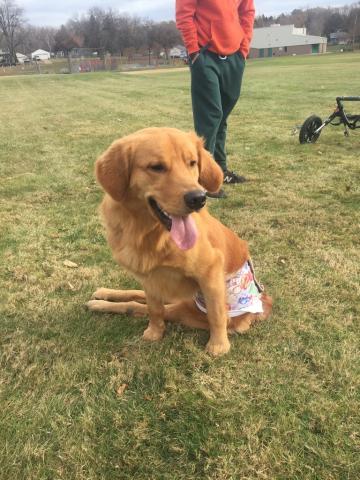
We Did It!
Our Chinese rescue mission is complete!

Earlier this year we asked for your help. Led by RAGOM and China Rescue Dogs, a team of 10 American rescue groups and several rescuers in China partnered together with a goal of rescuing 99 dogs in desperate need of help. When Covid-19 broke out in China, there was misinformation about dogs spreading the virus. As a result, many dogs were abandoned by their owners or confiscated by local authorities. There were already thousands of homeless dogs throughout the country whose only hope was international rescue. When air travel stopped, their chance at rescue was dismal. At best, the dogs would live in cramped shelter conditions, likely for years. At worst, they would be stolen and sold for meat.
Working together, we found a way, against all odds, to procure a private charter plane to transport the dogs to America. You helped us raise the needed funds, and we secured a very complicated list of permissions and permits.
Everything was set.
And then – the day before our plane was to leave – everything fell apart.
Due to a paperwork problem with an unrelated flight, the Chinese government canceled our flight permission. We were deeply saddened but still determined to rescue the dogs, so we went back to the drawing board.
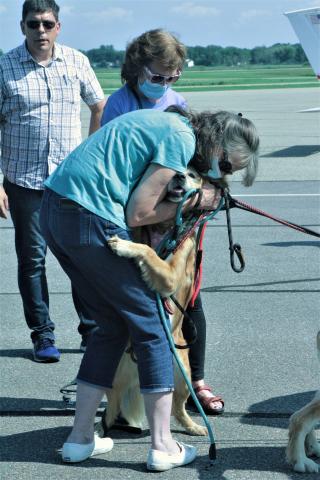
Working with agents in China, we secured permission to fly the dogs in climate-controlled cargo planes a few at a time. The process was extremely challenging and presented a whole new set of logistical obstacles. But we found a way. Over the last few months, the dogs have been slowly arriving, and on Monday, the last group of dogs safely arrived.
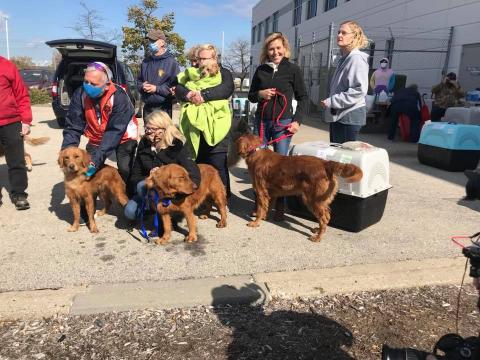
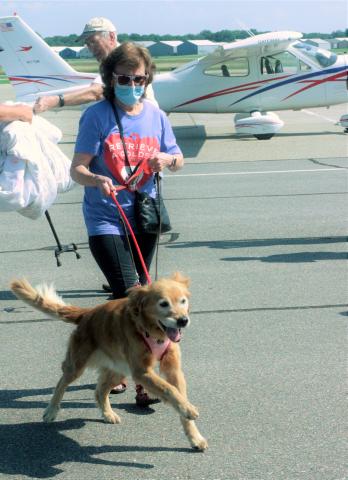
Many of the dogs are underweight and malnourished. All are starved for attention. But they are here, and they are safe, and their new lives are beginning. In the end, we were able to rescue 102 dogs. Each of our team of rescue groups took some of the dogs into their care and many have already been adopted.
Thank you. You believed in us, you encouraged us, and you supported us, even when the challenges seemed insurmountable. Together, we have changed the lives of 102 special souls.
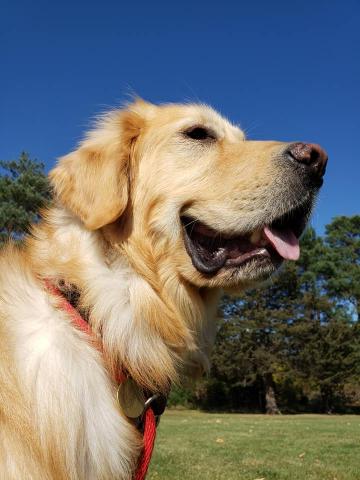
Fostering Gabe
From former RAGOM chair, Mark Crellin
After I announced we had found Gabe his forever home, a very kind volunteer sent me an email asking me, “How do you feel?” I thought that this was such a perceptive question. As many of you know, the adoption of your foster brings on many mixed emotions. Here’s the reply I sent back:
“Thanks for asking. It’s funny, but I was thinking about this now over my morning coffee. Over the past few years of fostering, I always find that I run through a mix of emotions during the first few days.
First, I love our mission and my role as foster when we believe we found a great home that suits our foster dog’s needs. Seeing that wish confirmed by the reactions of the dog and the adopter toward each other -what comes to mind is that love, at first sight, is possible for dog and human. I saw that with Gabe and his adopter.
Second, I always have a bit of anxiety about how things will work out. In my experience, if unexpected things pop up, you’ll start to see signs in your communications within the first few days. Historically, I believe that RAGOM has a return rate of less than five percent. Fosters should still prepare themselves for a possible return. When the phone pings with a text message from the adopter, I do feel a mix of anticipation and concern. So far, all reports on Gabe are super positive.
The third thing we almost always experience is that our house always seems too quiet. Gabe hung out in the kitchen, usually strategically napping either in front of the stove or in front of the fridge, so he didn’t miss out on anything. The empty floor seemed cavernous. Gabe was with us for almost seven months, far longer than the typical foster dog’s stay. We definitely bonded, so I do feel a loss for me, but joy for Gabe.
Lastly, we always experience that feeling that it will be good to take a break from fostering for a while. Fostering takes dedication—not just working with a new dog and their medical, emotional needs, but also working through the RAGOM role: reviewing and assessing applications and interviewing potential adopters can be time-consuming, and you want to make the best match.
With us anyway, our feeling of needing a break has seldom lasted more than a couple of weeks, and then a dog always seems to show up on the plea who pulls on our heartstrings, and here we go again! Fostering for RAGOM has been such a joy for us, and we look forward to our next adventure.”
Order your 2021 Golden Life Calendar!
The Golden Life” 2021 RAGOM Calendar features 12 months of beautiful RAGOM dogs and their stories. Enjoy the all-new photos for 2021. With every month, you’ll have funny, poignant and charming reminders of the good work that RAGOM does with your support. At just $14, it makes a great gift for any Golden Retriever lover.
Submit Your Photo!
The Golden Life” 2021 RAGOM Calendar features 12 months of beautiful RAGOM dogs and their stories. Enjoy the all-new photos for 2021. With every month, you’ll have funny, poignant and charming reminders of the good work that RAGOM does with your support. At just $14, it makes a great gift for any Golden Retriever lover.

